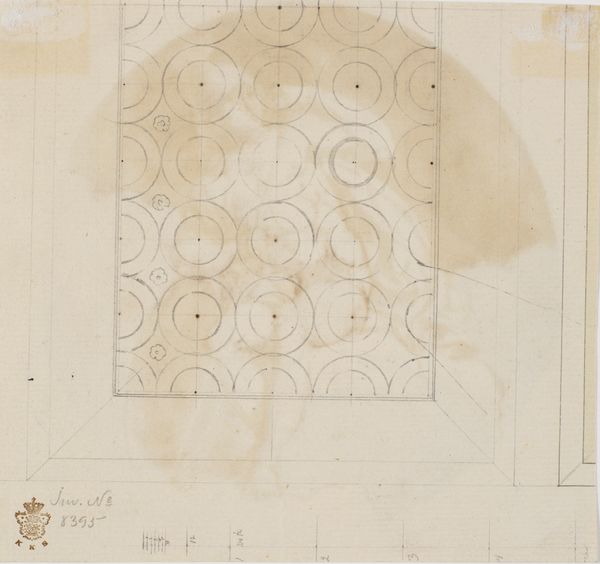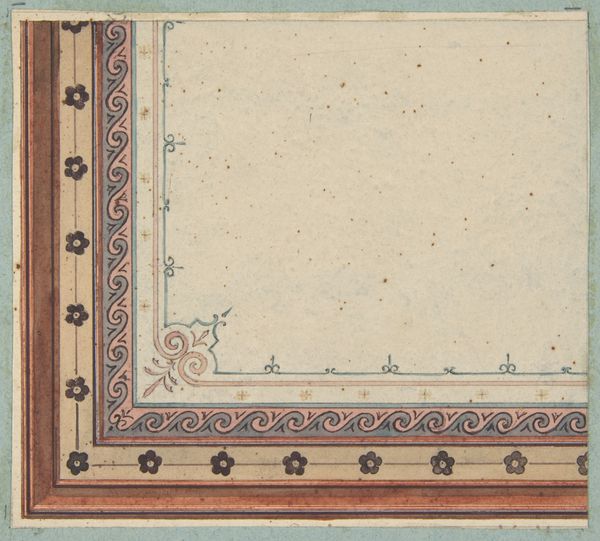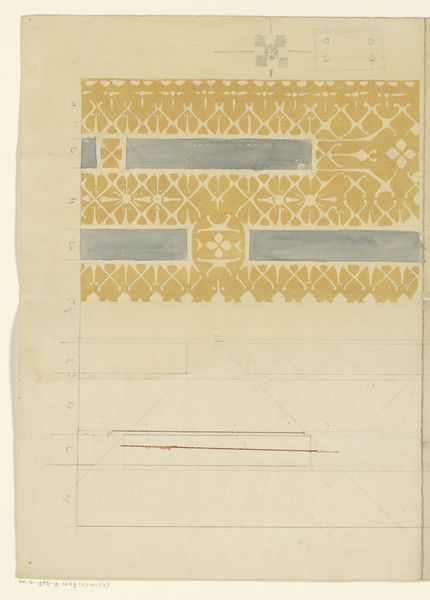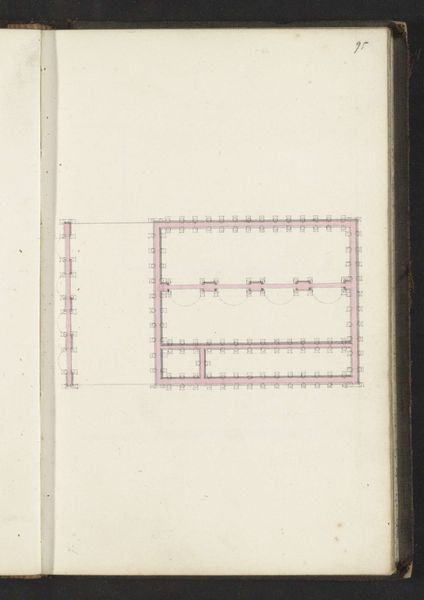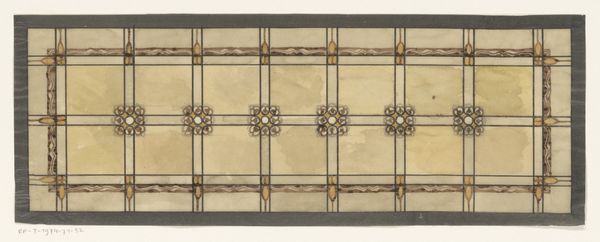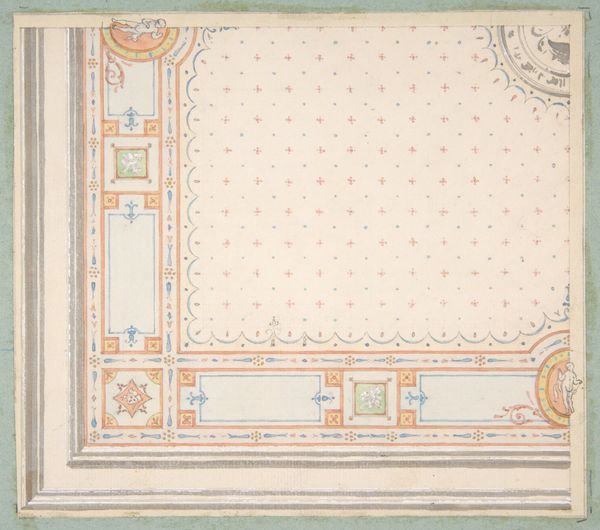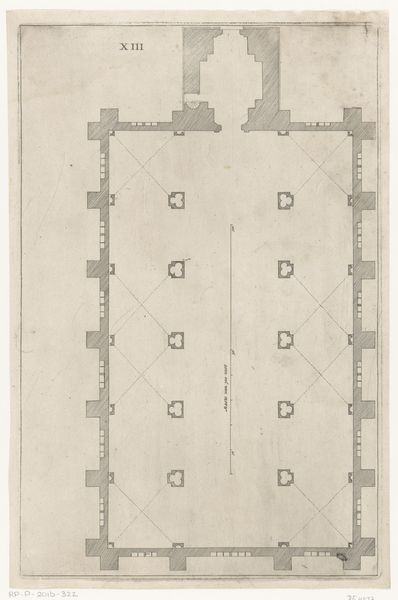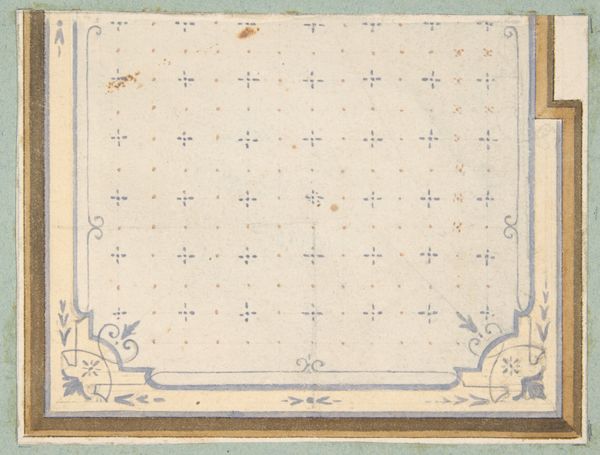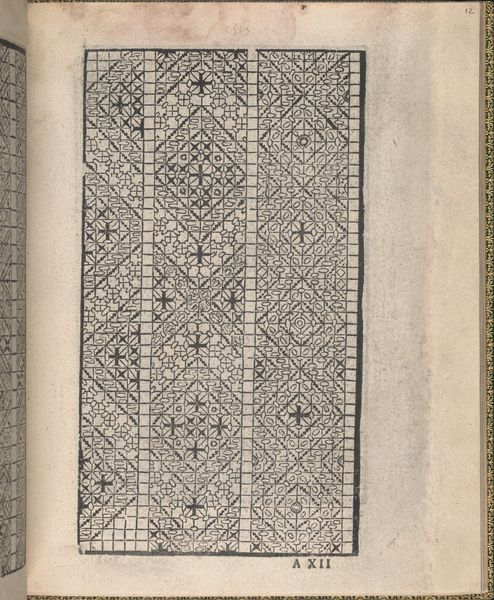
Udkast til loft med cirkelrunde kassetter med violet bundtone 1743 - 1809
0:00
0:00
drawing, paper, watercolor, ink
#
drawing
#
neoclacissism
#
pattern
#
paper
#
watercolor
#
ink
#
geometric
#
miniature
#
watercolor
Dimensions: 267 mm (height) x 149 mm (width) (bladmaal)
Editor: Here we have "Udkast til loft med cirkelrunde kassetter med violet bundtone," or "Design for a ceiling with circular coffers and violet undertones" by Nicolai Abildgaard, created sometime between 1743 and 1809. It's a drawing made with ink and watercolor on paper. I'm immediately struck by the geometry; it's almost like a blueprint but also very delicate. What do you see when you look at it? Curator: What captures my attention foremost is the interplay of the patterns. Note how Abildgaard delineates three distinct zones within the composition, each a variation on a circular motif. Do you perceive the subtle shift in density and tone as you move from the periphery towards the central panel? Editor: I do. It's almost like he’s testing out different options, variations on a theme. The center is denser and richer in color. What do you make of the color choices, especially that violet undertone in the title? Curator: Precisely. Abildgaard's utilization of a violet undertone in the central panel, juxtaposed against the paler hues of the flanking zones, engenders a visual hierarchy, guiding the viewer's gaze towards the nucleus of the design. Consider the formal properties: how does the repetition of the circular coffers affect your reading of the surface, its depth? Editor: It's fascinating how the repeated circles, especially in that central, violet-toned section, create a sense of depth despite it being a flat drawing. It feels like looking up into something. Does the rigid geometry relate to the Neoclassical movement? Curator: Indeed. The geometric precision and controlled symmetry are hallmarks of Neoclassical aesthetics, reflecting a renewed interest in the art and architecture of antiquity. The underlying grid structure and measured increments along the lower edge further accentuate this formal control. Notice also the variations in the drawing itself—how certain circles are more or less defined, some bleed slightly. Editor: I see what you mean; it's not just a rigid plan, but there's also an element of the hand present. That’s great—analyzing it this way makes the piece so much more alive! Curator: Precisely, an attention to form enables a decoding of structure, purpose, and expression. It is in such observation that appreciation germinates.
Comments
No comments
Be the first to comment and join the conversation on the ultimate creative platform.

